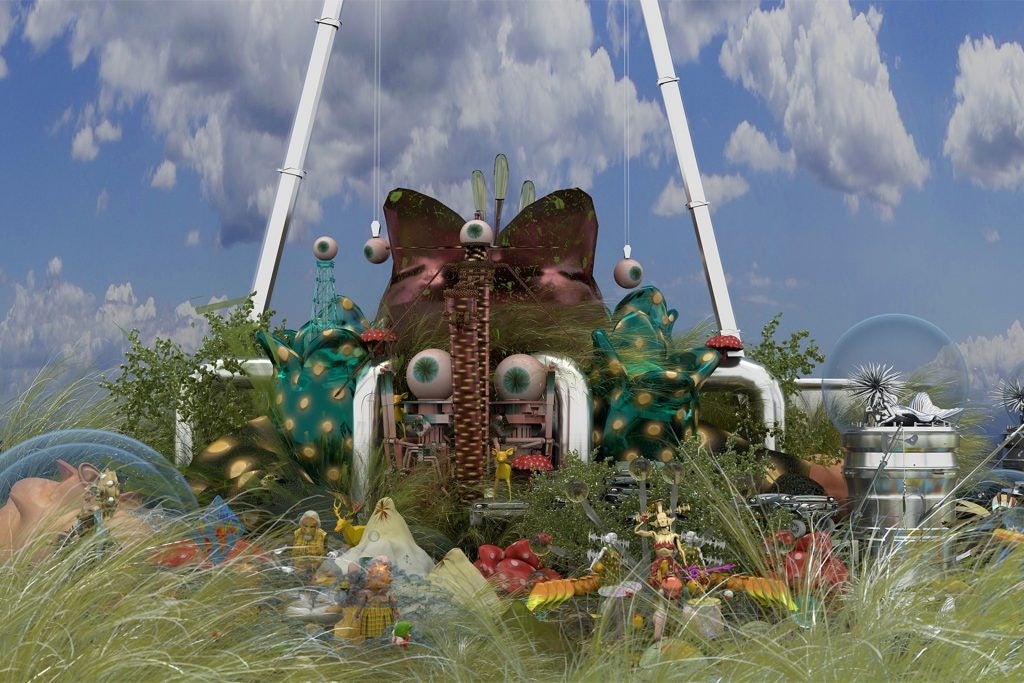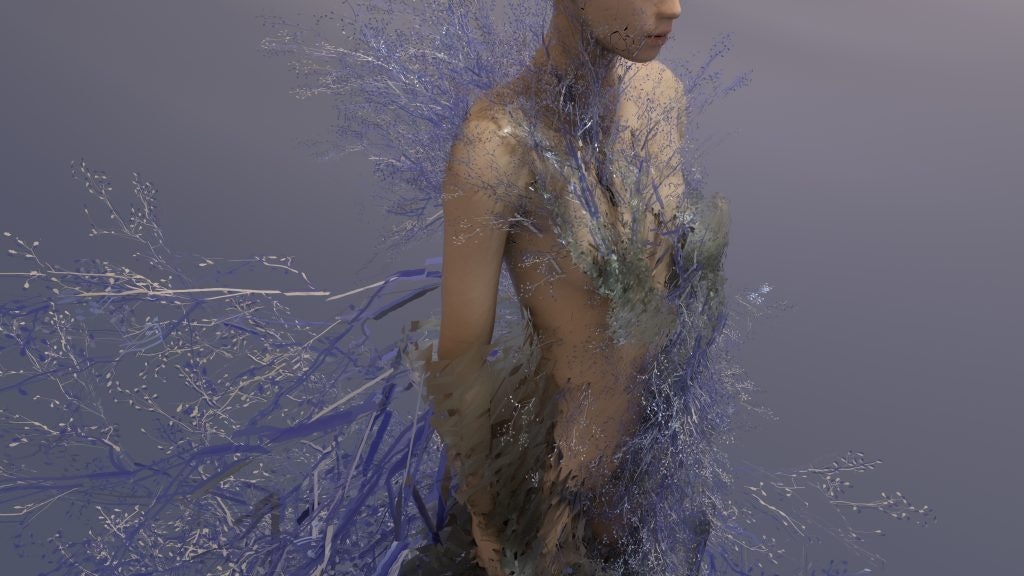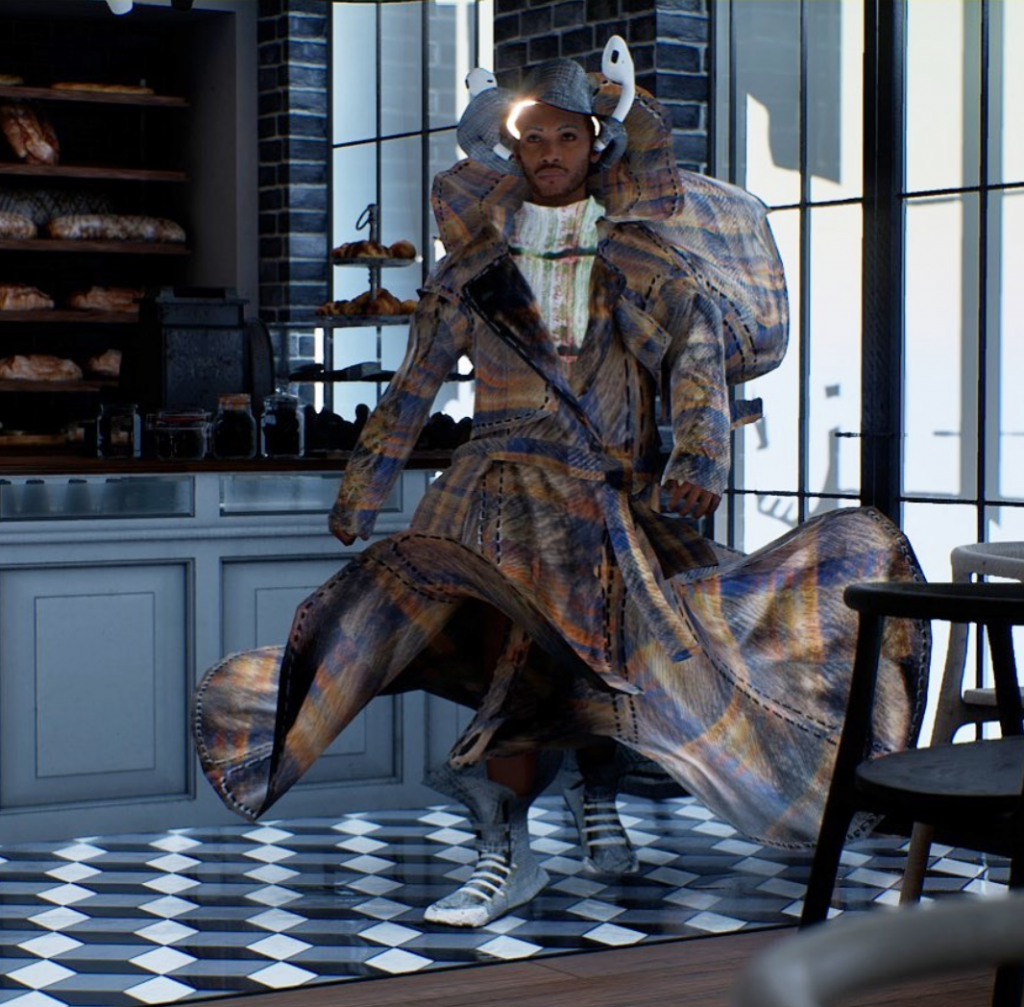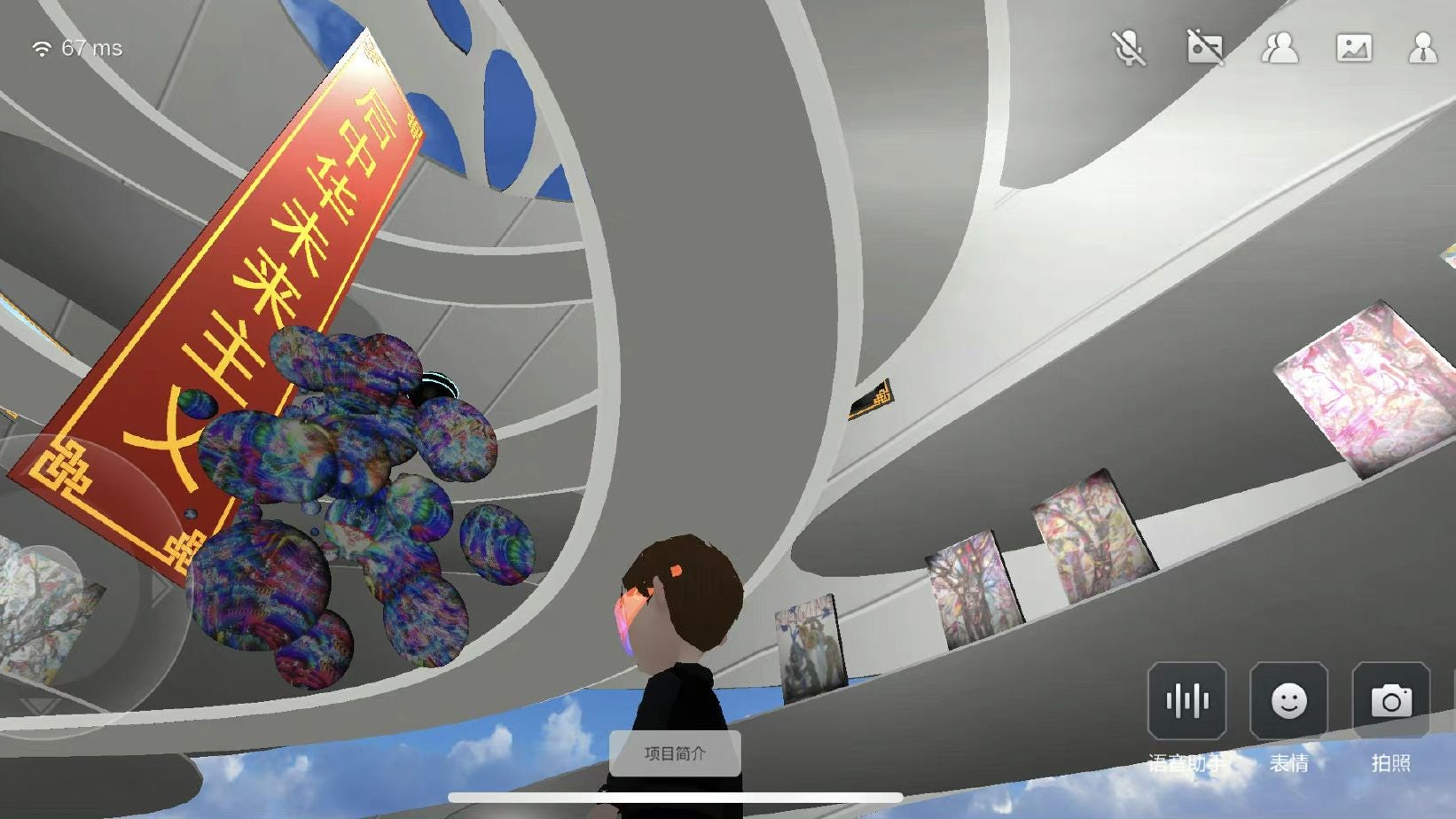Fresh from his role as CGI artist on Gucci’s latest “Good Game” campaign under the creative direction of Alessandro Michele, Zongbo Jiang is a cool customer. “I’m very shy…I don’t care about self-promoting,” he tells Jing Daily at the recent Into The Metaverse event hosted by Le Book. Alongside Gucci, his vibrant, immersive aesthetic has already been tapped by Vogue China, Metaverse Fashion Week, Ravyn Lenae, and Victor Wong.
Jiang is one of a new, exciting wave of digital designers from China making their mark on Web3 — not only at home but globally. He joins the likes of Scarlett Wang, Keiga Hua Hui, Stephy Fung, and others exploring the limits of the medium. “I want to make work that explores issues such as mental health, animal rights, and the environment in a virtual world: to create a community that can provoke change as we all share this commonality — of living on this planet,” says Jiang, who hails from Chengdu, and calls himself a “visual activist” rather than a digital designer.

Jiang, along with contemporary from the Royal College of Art Xiaoling Jin from Ningbo, was recently recognized with an award at the recent ITS talent showcase in Trieste. Barbara Franchin, president of the ITS Foundation, explains that while the ITS digital fashion contest is only two years old, they had “definitely witnessed a strong fascination from Chinese young designers in the freedom the digital realm allows for.” She continues, “they seem to have a sense of the poetic, of the purely symbolic, in their digital projects that is, for the moment, stronger than what we have received from other countries.”
In fact, it was Suzhou-born Hua Keiga Hui who won ITS’ inaugural Digital Fashion Award in 2021 and was on hand this year to present 2022’s version. Hua sees his role as one of “creating additional value in the real world.” He honed his virtual craft at Japan’s Kyoto Seika University, where he studied product design including 3D. Now he's building inclusive and progressive digital worlds to create the future landscape of emerging Asian youth subcultures.

“Once I was back in China last year I realized that people here love to look at Web3 and the metaverse, and I think it comes from platforms like Douyin or Xiaohongshu where they are already being very prolific. It’s also coming from communities or subcultures like techno where they quite like to combine these with computer tech into underground nightclubs,” Hua remarks on a Zoom call from Shanghai. He’s provided visuals for Ambush's limited edition collaboration with Reese’s Puffs’ in the so-called “breakfastverse,” which gives the commodity cereal a bold, pop-inspired makeover in Web3.
The role of the Chinaverse and its expansion is becoming increasingly important in the mainland. “Despite the modifications, Beijing recognizes the potential of the digital economy and big tech has the backing and support from the Party from their five-year plan in place to achieve leadership in the new and developing space,” retail analyst Tiffany Lung observes.
Meanwhile, the country’s tech sector continues its rollout. Alibaba Group heavily utilized metaverse technologies in this year's Double 11 e-commerce shopping festival. The multinational’s research institute DAMO Academy introduced an XR-powered marketplace on Tmall and Taobao that enables consumers to shop for merchandise in their customizable avatars. Its Openverse platform, co-developed with Tencent, has completed pre-A round financing to the tune of hundreds of millions of RMB while Tmall Luxury Pavilion has created its virtual influencer Timo to showcase 3D digital collectibles. It also launched 3D virtual complexes on its mobile app to allow consumers to preview items in real-life digital scenarios.
Metaverse issues are now high on educational platforms too: this November saw the launch in Wuhan of the first China Metaverse Fashion Design Competition (中国元宇宙服装设计大赛), developed by tech company Zettakit (泽塔云) and featuring over 20 fashion and art education institutions. And Istituto Marangoni Shanghai held a graduate show which straddled Web3 via a showcase directed by fashion duo Pronounce. “It’s quite evident that we can see a boom in terms of investment coming into the Chinese Web 3 space. These resources allow creators to have the freedom to experiment with all types of digital designs,” Hong Kong-born Scarlett Yang, known for her ethereal, otherworldly visuals, suggests.

Yang’s capsule with The Fabricant earlier this year combined inspiration from gaming avatars with human biology to explore how clothes and movement mold identity in the virtual world. She has also been working with creative technologist communities within China and has been, she enthuses, “very inspired by the ‘can do’ spirit that I believe is inherently cultural. It comes from the open attitude towards technological experimentation, which is very valuable these days in building a truly impactful digital future.” Her talent has captured the attention of the Vamp;A Museum, Paco Rabanne, and SHOWstudio to name a few.
The Chinese diaspora is clearly enabling this educational wave to extend globally. Richard Hobbs from fashion company Brand New Vision points to the team behind digital fashion platform altar.space, which records and celebrates archival and influential historic fashion pieces. “Their head of 3D design, Yao Yao, has a great aesthetic and a focus on attention to detail from both a replica and a fantastical viewpoint. They are going to make a mark in this important area which is important for bringing history and education into web3,” he affirms.
Other stars of this nascent sector include CSM alumnus Christie Lau, an emerging name currently commanding the field. Born in Hong Kong and based in London, she earned herself a place in the top 10 CMS graduates to know after presenting three gigantic cubes printed with QR codes which, when scanned, revealed Instagram filters featuring digital garments. Currently, she’s working on a brief for an AR world filter on the photo-sharing app to create a filter inspired by her own culture.

“For me, my heritage is a weird one,” Lau states. “I haven't been back to Hong Kong for a while but I miss it. But for this, I’m using one of the few things that I feel connects me to my Chinese identity — going to the Columbarium on Tomb Sweeping Day to pay my respects to my grandparents. Now I’m reimagining one in the digital space.”
As the creator of the first 3D Qipao, an early favorite Stephy Fung has also often turned to her Chinese roots to inspire her aesthetic. In April 2022 the artist launched an NFT drop with The Fabricant inspired by the Chinese zodiac; for Chinese New Year, she will collaborate with Dragon City
—#
the metaverse platform in Decentraland. Janice Wu, event planner and ambassador at the virtual metropolis, thinks that domestic Web3 practitioners and creatives are well placed to become leading lights globally because they grew up digitally native. “Some of them live in an almost hyper-realistic world, born from Chinese tradition but becoming this kaleidoscope of gaming, Hanfu, and cosplay but also entirely futuristic. It’s fascinating,” she declares.
Fashion film festivals are also embracing the Chinaverse: the latest editions of Diane Pernet’s ASVOFF in Paris included a China strand that featured the emerging talent Shan Hua, also from the Royal College of Art. Her short graduate creation entitled They, which explored self-acceptance and the quest for beauty, also claimed Best Animation at London Web Fest. "These creatives are pushing the boundaries of the fashion industry's imagination with more diverse, visual effects. Her film was like a poetic journey for me," says Tasha Lau, founder of Labelhood and ASVOFFS judge.

“My grandfather would tell me about the metaverse in China, but of course, that might be a special case,” Hua jokes. “What’s uniquely Chinese about the new wave of local ‘metaverses’ is the poetry and mood in traditional Chinese painting — which I can also see in Chinese digital artists. There are some digital artists who are bringing Buddhist culture to the digital world too such as Lin Kunhao, LuYang, Tian Xiaolei, Lin Kunhao.”
Hua combines a digital identity with fashion-based thinking, and it’s this that marks her and her contemporaries out as leaders in their respective fields. She goes on, “I feel that the digital world is filled with the desires and fantasies of many people. What cannot be realized in reality may become a creative force in the digital world.”
In her project 2 5 2 6, fashion designer and professor Ying Gao from the University of Quebec in Montreal takes this one step further by asking, “if the role of fashion designers is to imbue a form and a function to materials intended to dress the body, I wonder about the question of the immaterial garment and the virtual body, devoid of substance, when the digital has become a real ‘second nature.’”
We might well be facing this (admittedly obscure) prospect in the decades to come. But in the work of these creatives, such changes begin to look less daunting. Their art has already made Web3 into something more powerful — and beautiful — than it might otherwise have been.

